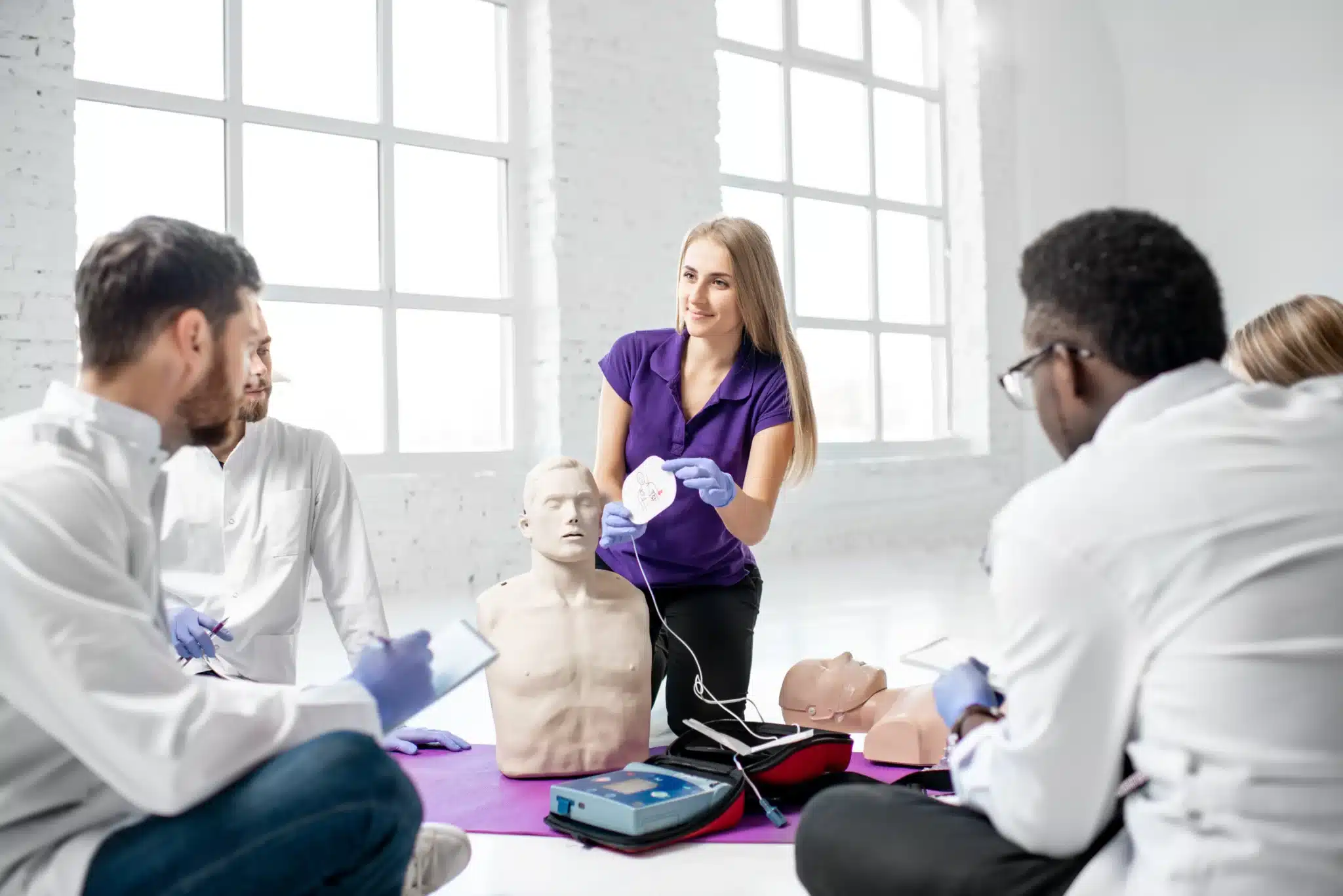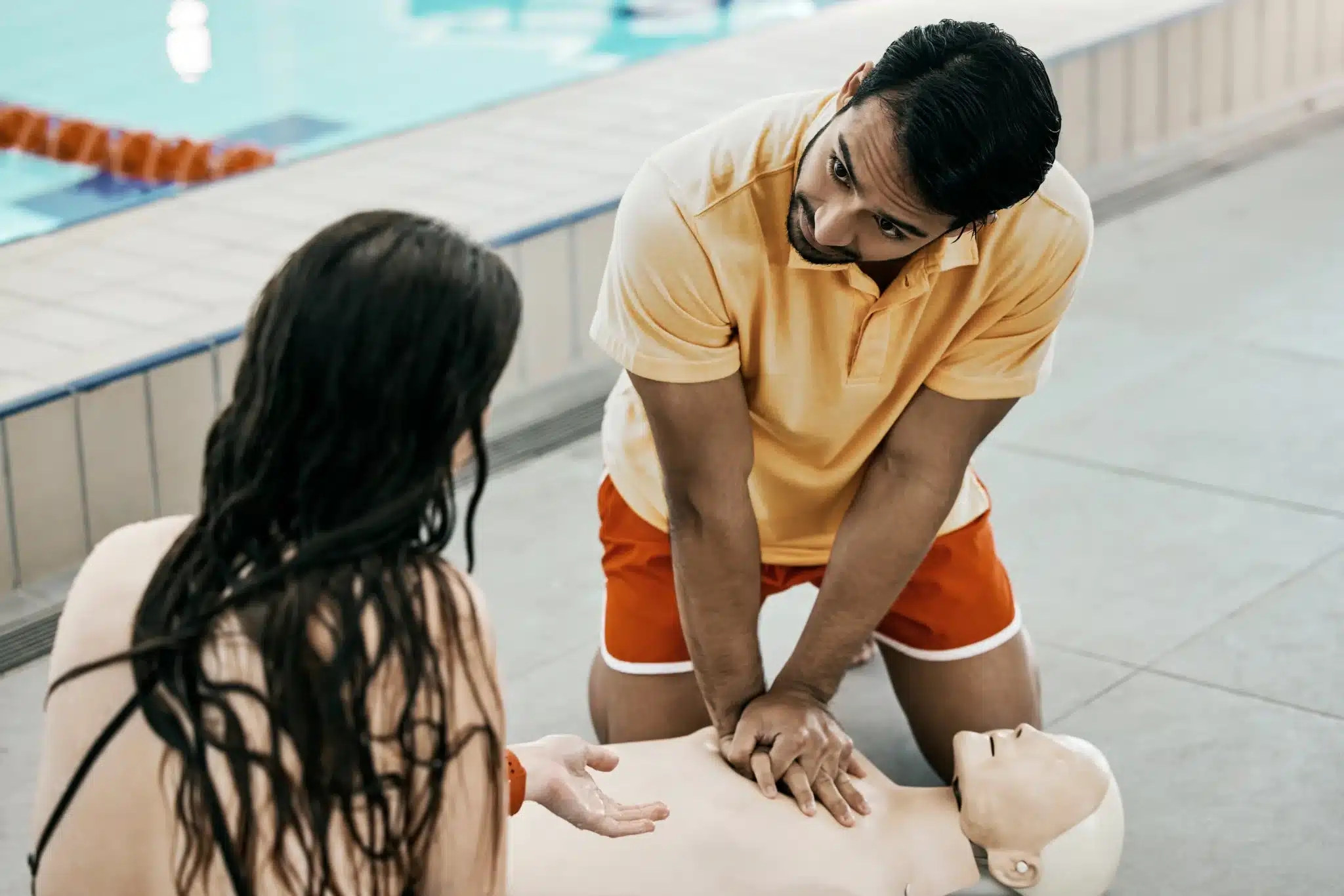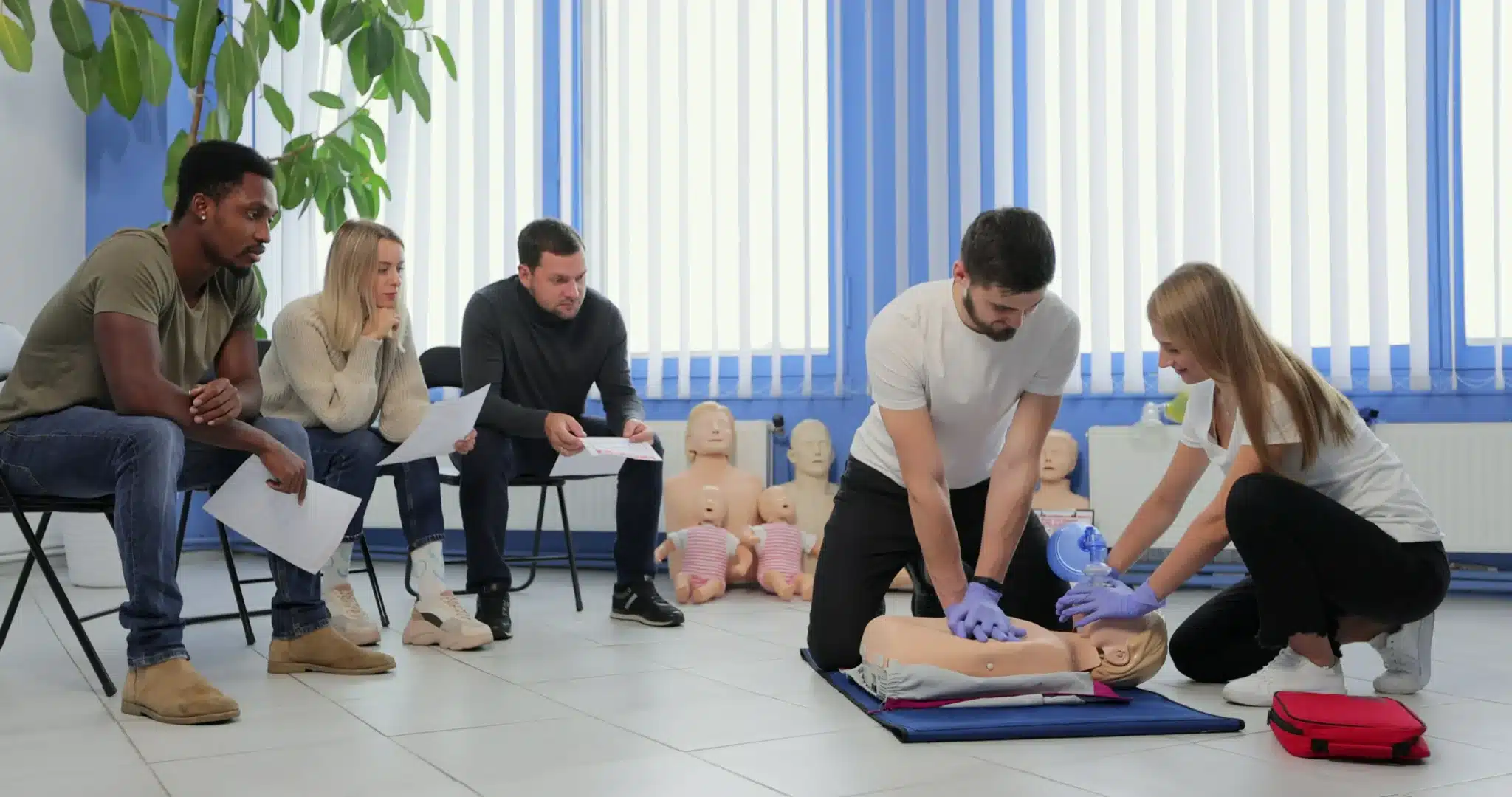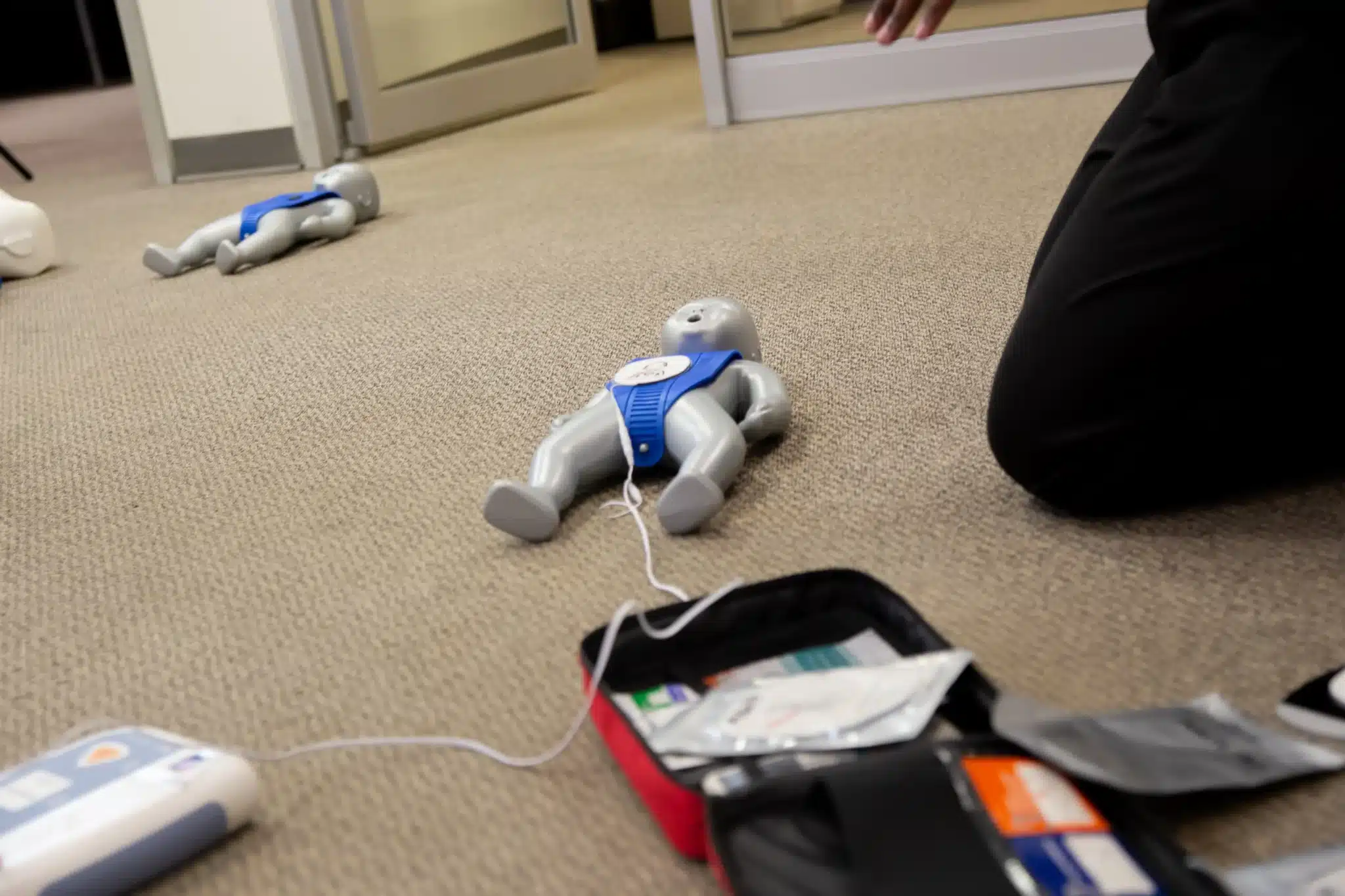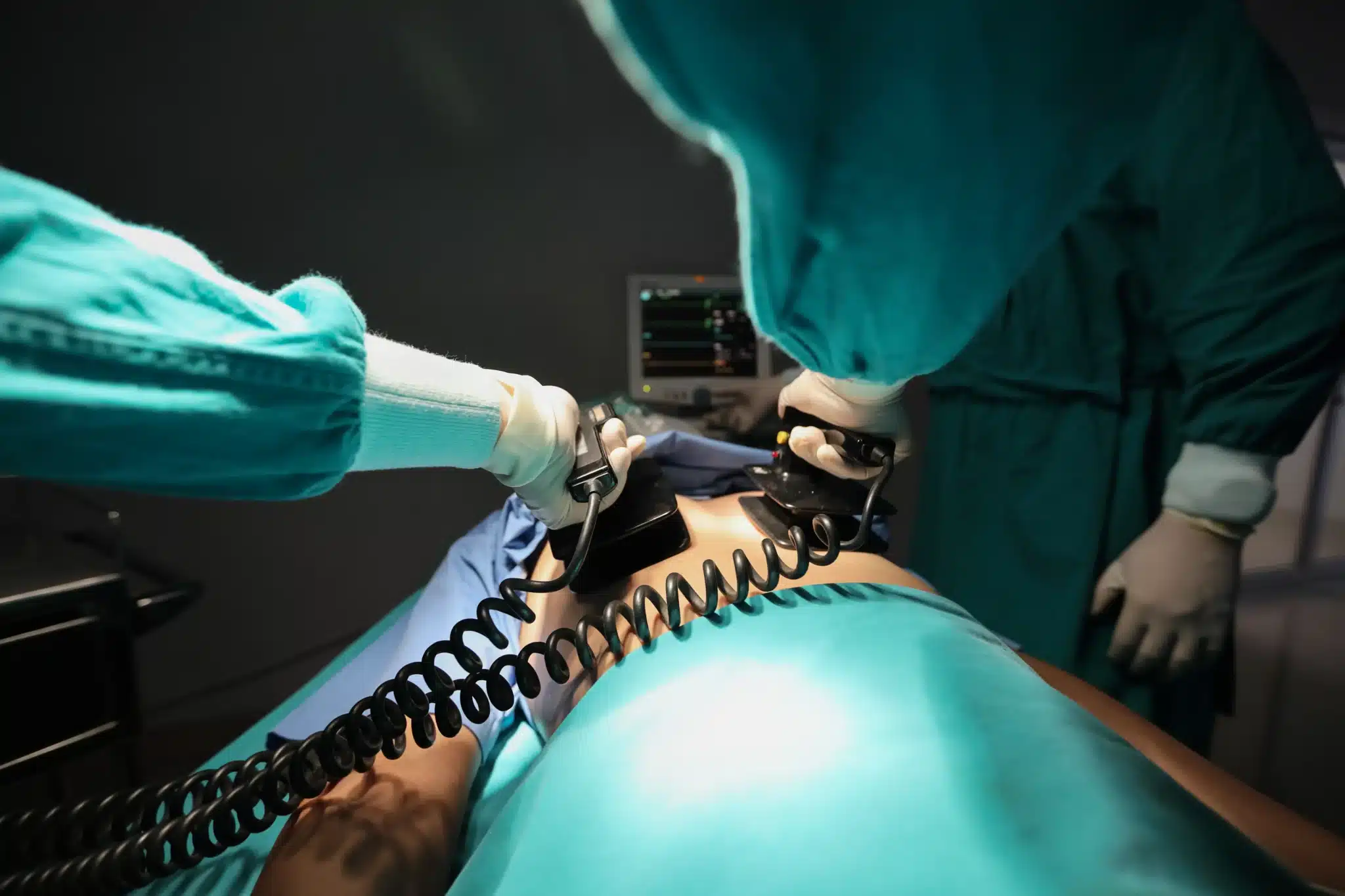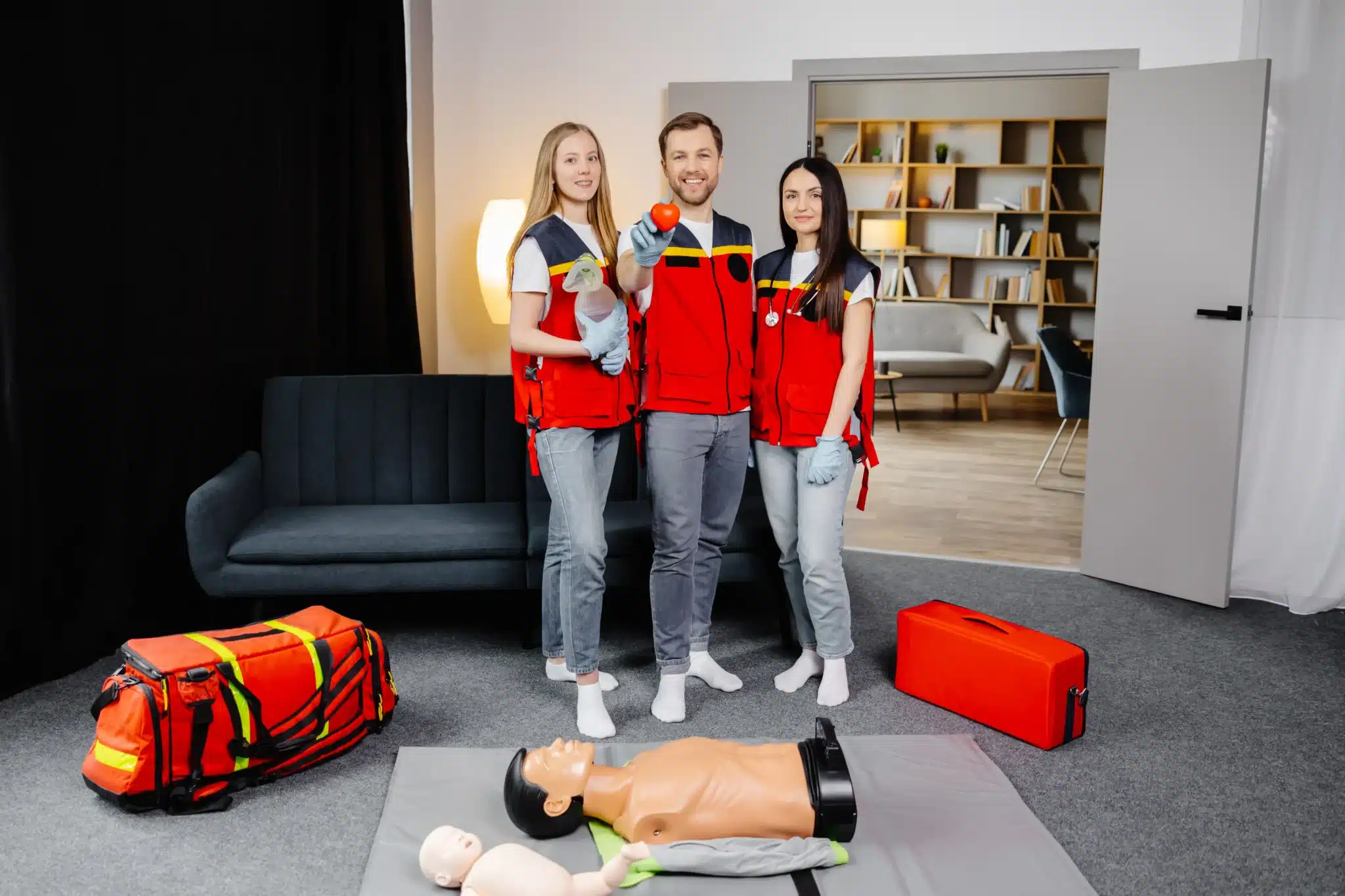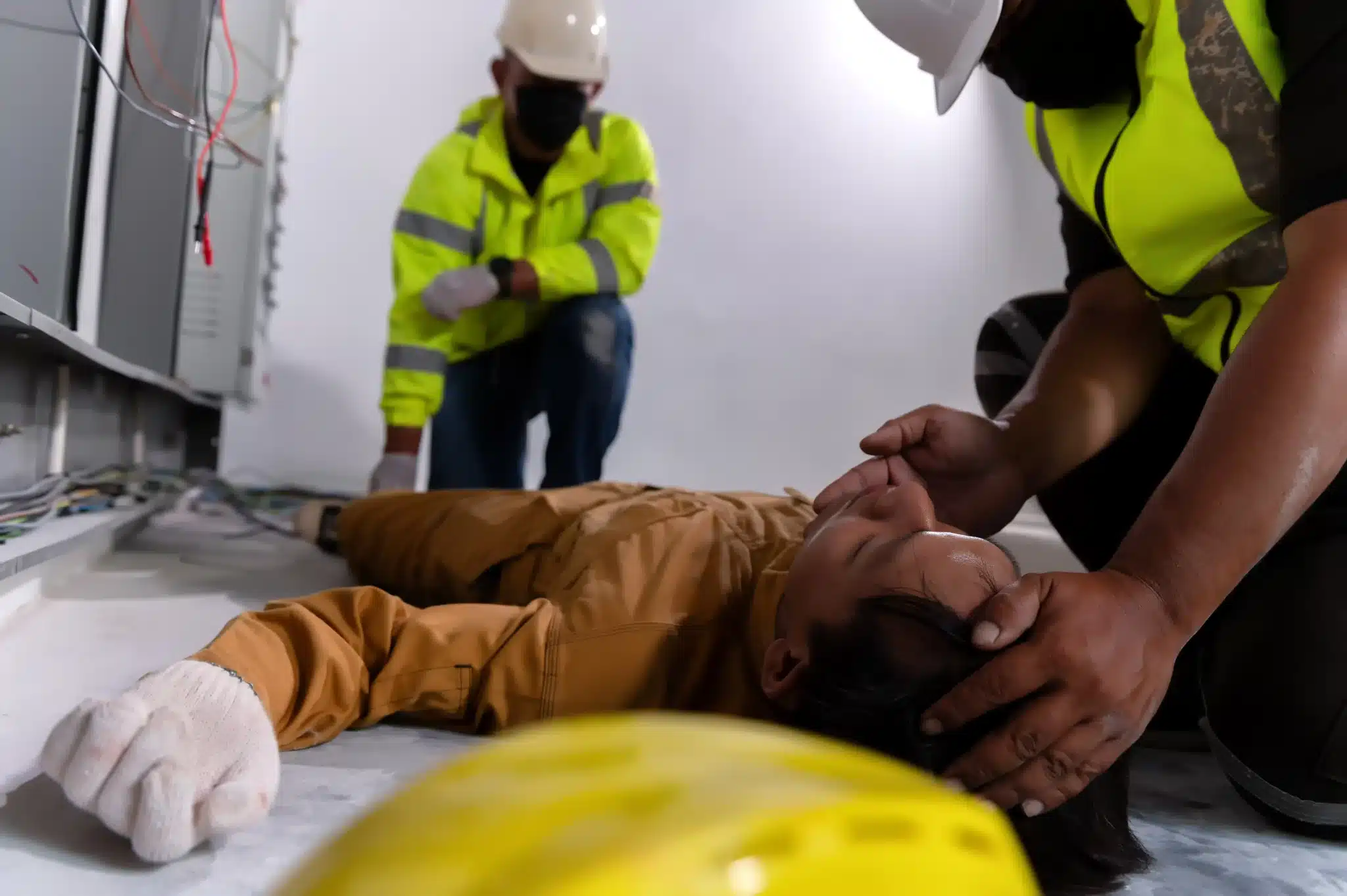As a community volunteer in Fremont, you already dedicate your time to making a difference. But what if you could amplify your impact by learning a skill that could save someone’s life? CPR training for community volunteers in Fremont is more than just a certification—it’s an empowerment tool that equips you to handle emergencies with confidence and skill. In this post, we’ll delve into the world of CPR, exploring its importance, the various training programs available in Fremont, and how you can get certified. We’ll also discuss the unique benefits CPR training offers to community volunteers, from enhancing community safety to building confidence in critical situations. Join us as we uncover the power of CPR and how it can transform you into a true community hero.
Key Takeaways
- CPR training empowers you to save lives: It’s a skill for everyone, regardless of background, and can dramatically increase the chances of survival during cardiac arrest. Find a local class and become equipped to make a difference.
- Fremont offers a variety of CPR courses: From basic CPR and First Aid to advanced certifications like BLS, ACLS, and PALS, there’s a program to suit your needs. Explore the options and find the right training level for you.
- Stay CPR-ready with regular practice: CPR skills can fade, so regular practice and refresher courses are essential for maintaining proficiency. Stay up-to-date with the latest guidelines to ensure you’re prepared to act effectively in any emergency.
What is CPR and Why Does it Matter?
This section explores what CPR is and why it’s such a critical skill, especially in emergencies.
What is CPR?
Cardiopulmonary resuscitation (CPR) is a lifesaving technique used when someone’s heart stops beating suddenly. It involves chest compressions and rescue breaths that help circulate oxygenated blood to the brain and other vital organs. CPR can truly be the difference between life and death during a cardiac arrest. And the best part? CPR training is accessible to everyone. At Fremont CPR Classes, we empower people just like you with this essential skill.
Why is CPR Critical in Emergencies?
Effective bystander CPR can double or triple a person’s survival rate after cardiac arrest. When more people are trained in CPR, the chances of a fast, effective response during a medical emergency increase dramatically. Think about it: in a crisis, immediate action is crucial. CPR bridges the gap before professional medical help arrives, significantly increasing the odds of survival. Community-wide CPR training helps ensure that people of all ages and backgrounds have access to this lifesaving skill. By becoming CPR certified, you become a vital link in the chain of survival.
CPR Training Programs in Fremont
Fremont offers a variety of CPR training programs to equip residents with life-saving skills. Whether you’re a healthcare professional, a teacher, or a concerned community member, there’s a course that fits your needs. Here’s a rundown of the key programs available:
AHA Heartsaver CPR AED
The AHA Heartsaver CPR AED course is perfect for people outside of healthcare who want to be prepared for emergencies. This course covers the basics of CPR and how to use an automated external defibrillator (AED). It empowers individuals to respond confidently to sudden cardiac arrest.
BLS for Healthcare Providers
For healthcare providers, Fremont CPR Classes offers the American Heart Association BLS course. This program focuses on the skills healthcare professionals need, including high-quality CPR, using a bag-mask device, and relieving choking. More information about BLS courses is available on Bay Area CPR.
ACLS
Advanced Cardiovascular Life Support (ACLS) training is another essential course offered by Fremont CPR Classes. This advanced program is designed for healthcare professionals who manage cardiac arrest and other cardiovascular emergencies. It covers advanced techniques for providing effective care in critical situations.
PALS
Pediatric Advanced Life Support (PALS) training focuses on the specific needs of infants and children facing medical emergencies. It equips healthcare providers with the skills to respond effectively to pediatric emergencies.
Who Can Take CPR Training?
CPR training is designed to empower people of all backgrounds to save lives. Whether you’re a seasoned healthcare professional, a concerned parent, or simply someone who wants to make a difference,
Age and Physical Requirements
There aren’t strict age limits for learning CPR. The American Heart Association (AHA) recommends modifications for teaching CPR to children and adolescents, emphasizing the importance of starting CPR education early. While physical strength is helpful for performing compressions, adaptations exist for individuals with physical limitations. CPR and First-Aid certification courses typically last one to two days, offering flexibility for various schedules.
No Medical Knowledge Needed
You don’t need a medical background to learn CPR. The techniques are straightforward and designed to be easily grasped by anyone willing to learn. Anyone can learn and perform CPR, making it a truly empowering skill for community members.
Certification Level Eligibility
Different CPR certification levels cater to various needs and professions. Fremont CPR Classes offers a range of AHA courses, including BLS for healthcare providers, Heartsaver CPR AED for the general public, and specialized certifications like ACLS and PALS for advanced medical professionals. This variety ensures you can find the right training level to match your goals, whether you’re a healthcare worker, a childcare provider, or a concerned citizen.
What Happens During CPR Training?
CPR training isn’t just about memorizing steps—it’s about gaining the confidence to act quickly and effectively in a real emergency. Whether you choose a basic CPR and First Aid class or a more advanced course like ACLS, you’ll learn essential skills and techniques in a supportive environment.
Skills and Techniques You’ll Learn
Fremont CPR classes offer a variety of American Heart Association (AHA) courses, including BLS, ACLS, and First Aid. These courses cover recognizing the signs of a cardiac arrest, performing chest compressions, giving rescue breaths, and using an automated external defibrillator (AED). You’ll also learn how to respond to choking emergencies and other medical situations.
Hands-on Practice and Skill Assessment
A typical CPR and first-aid class in Fremont will cover a wide range of topics. Expect a combination of instructor-led discussions, demonstrations, and, most importantly, hands-on practice. You’ll work with mannequins to simulate real-life scenarios, allowing you to build muscle memory and refine your technique. Instructors provide feedback and guidance, ensuring you’re comfortable performing each skill correctly. These classes in Fremont offer an invaluable opportunity to learn life-saving skills in a supportive, professional environment.
Certification and Renewal
Upon successful completion of the course, you’ll receive a certification card valid for two years. Fremont CPR Classes offers renewal courses, as do many other providers like the American Red Cross and your local YMCA. Our Fremont CPR classes offer this format for most of our courses, including BLS and ACLS certification. Staying current with your certification ensures your skills are up-to-date and you’re prepared to respond effectively when needed.
CPR Training Costs & Accessibility
Getting CPR certified is an investment in yourself and your community. Understanding the costs and exploring available resources can make training more accessible. Let’s break down the financial aspects of CPR training and look at ways to make it fit your budget.
Program Costs
CPR and First Aid certification courses typically run for one or two days, depending on the program and provider. Fremont CPR Classes offers competitive pricing on various courses, from basic CPR training to specialized certifications like BLS. Reach out to us directly for specific pricing details on the course you’re interested in.
Financial Aid and Group Discounts
We believe that everyone should have access to life-saving skills. As a woman-owned business, we prioritize high-quality instruction and convenient scheduling. We also offer discounts for groups, making training more affordable for community organizations, businesses, or groups of friends. Contact us to learn more about group discounts and how we can tailor a program to your needs.
Free/Subsidized Training
While professional CPR certification does come with a cost, there are often free or subsidized community CPR programs available. These programs, sometimes part of a broader community aid initiative, aim to equip individuals with basic life-saving skills. They may cover CPR, AED use, and First Aid fundamentals. Check with local community centers, hospitals, or organizations like the American Red Cross to find out about free or low-cost CPR training opportunities in your area. You can also explore our Northern CA CPR Directory for additional resources.
How to Register for CPR Training in Fremont
Getting CPR certified is straightforward. This section covers everything you need to know about signing up for a CPR class in Fremont.
Steps to Sign Up
Signing up for CPR training is easy. First, choose a class that fits your schedule and needs. Fremont CPR Classes offers a variety of courses, from basic CPR and First Aid to advanced certifications like ACLS and PALS. Once you’ve selected a course, visit the Fremont CPR Classes website and complete the online registration form. You’ll receive a confirmation email with details about your upcoming class. You can also register by phone or in person.
Required Documents & Preparation
Before your class, gather a few essentials. Bring a valid photo ID for verification. While prior medical knowledge isn’t required, reviewing the course content beforehand is helpful. Check any pre-course materials provided by Fremont CPR Classes to prepare for your training. Most CPR and First Aid certification courses take a day or two, so plan your schedule accordingly.
Finding Upcoming Classes
Fremont CPR Classes offers various CPR training options throughout Fremont, Newark, and San Jose. You can find upcoming CPR classes listed on their website. They also offer group discounts, so inquire about special pricing if you’re registering with a group. If you have questions, reach out to their team through the contact us page. They’re happy to help you find the right class.
Benefits of CPR Training for Community Volunteers
As a community volunteer in Fremont, Newark, or San Jose, you dedicate your time to making a difference. Learning CPR empowers you to contribute even further by providing essential life-saving skills during emergencies. CPR training offers a range of benefits that extend beyond the individual, creating a safer and more prepared community.
Improve Community Safety and Preparedness
CPR training equips you with the skills to respond effectively during medical emergencies. Community CPR programs, often part of a comprehensive aid program, offer accessible training courses in CPR, AED use, and First Aid. These programs cater to both lay rescuers and community members, ensuring that anyone can learn CPR and potentially save a life. By increasing the number of trained individuals in Fremont, we improve our collective ability to respond to emergencies and provide immediate assistance until professional help arrives. For more information on CPR and first aid training, visit the Northern CA CPR Directory.
Build Confidence in Emergencies
Knowing how to perform CPR can transform you from a bystander into a potential lifesaver. Quality CPR training builds your skill set and instills the confidence to act swiftly and effectively under pressure. This confidence is invaluable, allowing you to remain calm and focused during critical moments, potentially making all the difference. CPR training addresses common misconceptions and empowers you with actionable steps, ensuring you’re prepared to handle real-life situations. Check out our BLS and ACLS courses for healthcare providers.
Create a Network of Prepared Individuals
When community members embrace CPR training, they create a network of first responders ready to intervene during emergencies. This network strengthens community bonds and fosters a culture of mutual support and preparedness. The impact of community-wide CPR training extends beyond immediate response, creating a ripple effect that promotes a sense of collective responsibility for safety and well-being. Consider joining the growing network of CPR-trained individuals in Fremont and contribute to a more resilient and prepared community. Contact us today to learn more about upcoming CPR training opportunities in your area.
Common CPR Misconceptions
It’s easy to feel intimidated by the idea of performing CPR. Maybe you’ve heard conflicting information, or perhaps you’re worried about doing something wrong. Let’s clear up some common misconceptions.
Debunking CPR Myths
One persistent myth is that only medical professionals should perform CPR. The truth is, anyone can and should learn CPR. While medical professionals have advanced training, bystander CPR is often the first link in the chain of survival. Even basic CPR can make a real difference while waiting for first responders.
Another common fear is causing harm while performing CPR. Current guidelines from the AHA emphasize compression-only CPR for bystanders. This method minimizes the risk of harm and focuses on the most critical aspect: maintaining blood circulation.
Some also mistakenly believe you should continue CPR until the person revives. While it’s essential to continue CPR until medical professionals arrive, it’s also important to perform it effectively. Prolonged CPR without breaks can lead to fatigue and less effective compressions. If others are present, switch off every two minutes to maintain the quality of compressions.
The Real Impact of Bystander CPR
Bystander CPR can truly be the difference between life and death. Studies show that effective bystander CPR can double or even triple survival rates in cardiac arrest cases. This highlights the profound impact community members trained in CPR can have. When more people are equipped with these skills, the chances of a timely and effective response increase dramatically, leading to more lives saved. Learning CPR empowers you to make a real difference. Check out our CPR training options to learn more. Every trained individual strengthens our community’s ability to respond to emergencies. Consider joining the ranks of those prepared to act when it matters most.
Maintain Your CPR Skills
CPR is a perishable skill. Even if you aced your CPR certification exam, regular practice and continuing education are key to staying sharp and ready for a real-life emergency. Let’s explore why maintaining your CPR skills is so vital for community preparedness.
Why Regular Practice Matters
Regular practice helps solidify the skills you learned in your initial training. Think of it like any other skill—whether it’s playing a musical instrument or a sport—consistent practice keeps those skills fresh in your mind and body. This is especially important with CPR, where quick, decisive action can make all the difference. CPR-trained individuals often inspire others to learn these vital skills, creating a ripple effect in community preparedness. By staying proficient, you become a role model and advocate for a safer community. For those looking to refresh their skills, consider checking out our CPR training programs.
Refresher Courses and Recertification
While your CPR certification is typically valid for two years, it’s important to remember that skills can fade over time. The Red Cross Scientific Advisory Council points out that skills can begin to decline within months of initial training. Refresher courses offer a chance to review essential techniques, stay updated on any changes in guidelines, and practice your skills in a safe, controlled environment. Think of refresher courses as a tune-up for your life-saving skills. Fremont CPR Classes offers a variety of refresher courses to help you stay prepared. We also offer group discounts for those looking to train together.
Stay Updated on Guidelines
CPR guidelines and best practices can evolve based on the latest research and scientific findings. Staying informed about these updates ensures you’re providing the most effective care possible. Debunking common CPR myths and understanding the realities of CPR empowers individuals to perform this life-saving technique with confidence and accuracy. Regularly reviewing resources from organizations like the American Heart Association and the Red Cross can help you stay on top of the latest recommendations. For more resources and information on CPR training in Northern California, visit our directory. You can also contact us at Fremont CPR Classes to learn more about staying up-to-date on the latest CPR guidelines.
Overcome Barriers to CPR Training
Let’s face it, life gets busy. It can be tough to fit another thing into your schedule, especially something like CPR training. But learning CPR is an invaluable skill, and there are ways to overcome common obstacles that might be holding you back.
Manage Scheduling Conflicts
Finding the time for CPR training can feel challenging, but Fremont CPR Classes offers flexible course options. They understand that people have varying schedules and learning preferences. Check out their website to find a class that fits your availability, whether it’s a weekday evening, weekend session, or even an accelerated course. For those seeking more specialized training, explore their BLS and ACLS certifications.
Break Down Cultural and Language Barriers
One of the beautiful things about Fremont is its diversity. It’s important that everyone in our community has access to life-saving skills like CPR. Community CPR programs provide these skills through accessible training courses that cover CPR, AED use, and First Aid. If you or someone you know faces language barriers or needs specific accommodations, reach out to Fremont CPR Classes to discuss options. They also offer a helpful Northern California CPR directory to find resources in your specific area.
Raise Awareness of Training Opportunities
Spreading the word about CPR training opportunities within your networks can make a real difference. Many people simply aren’t aware of the available resources. Share information about CPR and First-Aid certification with your neighbors, community groups, and social networks. Whether you’re a concerned citizen, a parent, or a healthcare provider, CPR training is accessible and comprehensive. You can even explore group discounts if you want to organize a training session for your community or workplace. Raising awareness can empower more people to learn this essential skill and contribute to a safer Fremont.
Related Articles
- Why CPR Matters in Healthcare – Fremont CPR Classes
- CPR Certification in San Jose: A Complete Guide
- CPR Myths and Facts for Lifesaving Confidence
- CPR Renewal in Fremont: Your Complete Guide – Fremont CPR Classes
- Workplace CPR and First-Aid Training Benefits
Frequently Asked Questions
What does CPR stand for and what does it involve? CPR stands for cardiopulmonary resuscitation. It’s a life-saving technique that combines chest compressions and rescue breaths to help circulate oxygenated blood to the brain and vital organs when someone’s heart has stopped beating.
What kind of CPR training is right for me? It depends on your needs. If you’re a healthcare professional, BLS, ACLS, and PALS certifications are likely necessary. For community members and those outside the medical field, a Heartsaver CPR AED course is a great option. Fremont CPR Classes offers a range of courses to suit different requirements.
How much does CPR training cost, and is financial assistance available? Costs vary depending on the course and provider. Fremont CPR Classes offers competitive pricing and group discounts. While free or subsidized community CPR programs may be available through local organizations, professional certifications typically involve a fee. Contact Fremont CPR Classes directly to discuss pricing and explore options.
How can I overcome scheduling challenges to attend CPR training? Fremont CPR Classes offers flexible scheduling options, including weekday evenings, weekend sessions, and accelerated courses, to accommodate busy lifestyles. Reach out to them to find a class that fits your availability.
How often do I need to renew my CPR certification, and why is it important? CPR certifications are typically valid for two years. Regular renewal ensures your skills are up-to-date and you’re prepared to respond effectively in an emergency. Refresher courses help maintain muscle memory and keep you informed about any changes in CPR guidelines.
